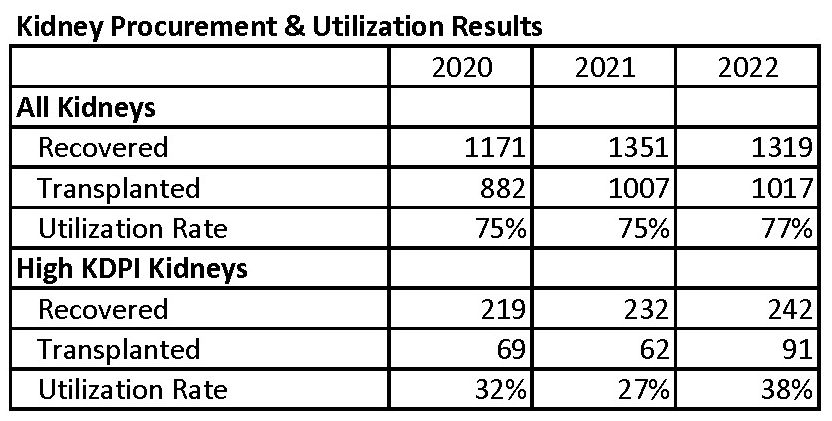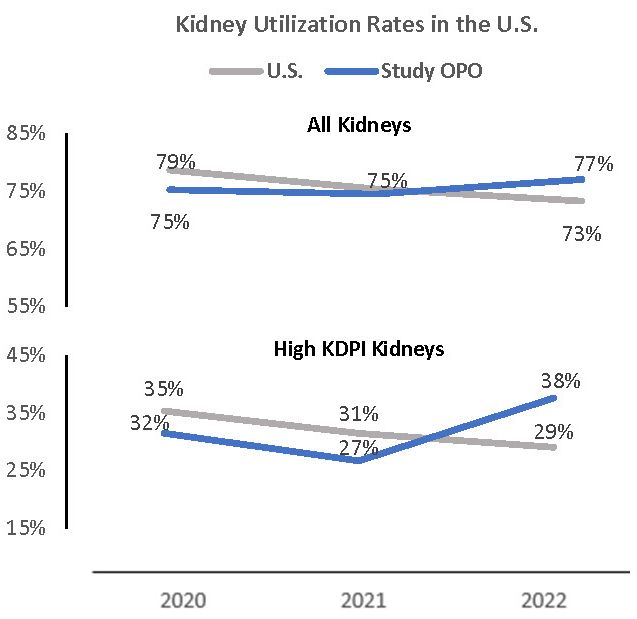Systematic and strategic allocation practices lead to increased kidney utilization
Larry Suplee1, John Clarke1, Sharon West1, Christine Radolovic1, Richard Hasz1.
1Gift of Life Donor Program, Philadelphia, PA, United States
Introduction: The number of deceased donor kidneys transplanted in the United States increased from 23,738 in 2020 to 28,313 in 2022, while the kidney utilization rate calculated as the percentage of kidneys transplanted from the pool of kidneys recovered decreased from 79% in 2020 to 73% in 2022. This decline in utilization rates was in part caused by the increased recovery of hard-to-place kidneys from medically complex donors in addition to the logistical challenges introduced by Kidney Allocation System (KAS) policy changes implemented in March 2021 requiring broader geographical sharing across Organ Procurement Organization (OPO) service areas.
Method: This was a single OPO, multi-center observational study designed to evaluate the effectiveness of strategic interventions designed to improve productivity and efficiency in kidney allocation. Prior to kidney recovery this OPO identified 5 sequential candidates cleared for transplant with final crossmatch initiated from at least 2 centers whenever possible and additionally encouraged centers with provisional interest to identify out-of-sequence (OOS) candidates suitable for transplant if recovery findings were unexpectedly marginal. Expedited placement, defined as allocation to OOS candidates, may be initiated as soon as possible when centers decline for all sequential candidates identified pre-recovery. In June 2022, the OPO began assigning expedited allocations exclusively to its most skilled and experienced coordinators. When broader geographical sharing was mandated through policy, leaders within the OPO built strategic relationships with transplant surgeons and administrators at high volume centers within its increased sharing radius to establish standards of practice, review data and proactively address allocation issues. Kidney allocation productivity was measured by transplant volume and efficiency was measured by utilization rate.
Results: Transplant volume increased 15% from 882 in 2020 to 1017 in 2022, while the utilization rate increased from 75% to 77%. For kidneys with KDPI > 85, transplant volume increased 32% from 69 in 2020 to 91 in 2022, and the utilization rate increased from 32% to 38%.


Conclusion: This OPO was able to simultaneously sustain increases in both transplant volume and utilization, particularly for kidneys from high KDPI donors, in an increasingly complex allocation system. OPO development of standard allocation protocols, particularly to manage expedited placement, can improve kidney utilization rates.